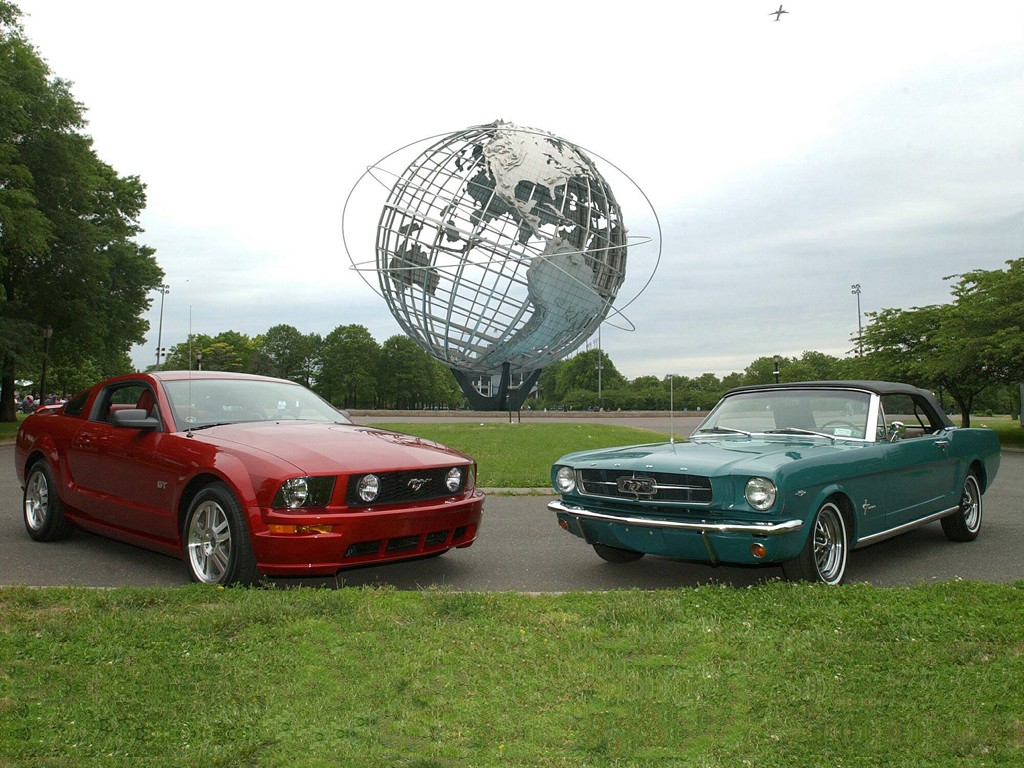Jun 27, 2013
Mustang Marketing Documentary from ‘Mad Men’ DVD Tells How the First Pony Car Was Really Sold in the Sixties
Authenticity is at the heart of what makes the AMC drama “Mad Men” so appealing to both fans and critics – the look, the attitude, the personalities and the way it all weaves into real life. That same quality applies to Ford Mustang, and has helped the pony car capture the hearts and minds of millions of fans around the world for almost 50 years.
When the creators of “Mad Men” are crafting the show, about a fictional 1960s Manhattan advertising agency, real products and how they were actually marketed in that turbulent era are incorporated in their storylines. Through the first six seasons, we’ve seen the classic Kodak carousel slide projector, iconic Howard Johnson motels and Heinz Baked Beans as focal points in the drama that centers on the lives and relationships of the employees of Sterling Cooper & Partners.
Creating plausible stories around real brands that viewers today are still familiar with requires serious and insightful research. For the season four DVD box set of “Mad Men,” filmmaker Cicely Gilkey produced a real-life case study titled “Marketing the Mustang: An American Icon.” The 30-minute documentary feature provides an inside look at one of the most successful new product launches in automotive history and how Ford developed and sold the original pony car.
While Mustang advertising never figured directed into a storyline on “Mad Men,” the recently concluded season six makes several aspirational references to the iconic brand. In the episode titled “For Immediate Release,” creative chief Don Draper gathers his team to brief them on a secret new car they are going to pitch in 1968. Eschewing the new client’s current method of selling its products, Draper tell his writers, “It’s totally new, I want you to go to the library and get me everything you can on Mustang. They know there’s been nothing before Mustang and nothing after, but they’re hoping it’s this.”
Ford Motor Company sold more than 1 million Mustangs in the first 20 months following the car’s April 1964 debut, something that would be unheard of for an all-new vehicle segment today, even with a much larger market.

In order to learn how Ford pulled off such a remarkable achievement, Gilkey went straight to the source, spending countless hours in the Ford archives in Dearborn, Mich.
“Ford gave me carte blanche to whatever archives I needed, shared and arranged for me to film on the track and much more,” said Gilkey. “They also introduced me to John Clor at Ford Racing.”
Clor handles grassroots communications for the division that produces and sells high-performance parts for Ford vehicles. He also is the conduit to the home office for the more than 300 Mustang clubs around the world.
As a journalist and author for more than 25 years, Clor is a foremost historian on the world’s favorite pony car and an all-around great storyteller. He spent several hours answering Gilkey’s questions on camera for the documentary.
“It was quite a change as we entered the sixties and young people started to influence purchase decisions; they didn’t want grandpa’s big old car,” said Clor. “Young people were looking for something that was the polar opposite to what was on the highways, they wanted to distance themselves from the establishment.”
The car Ford designers and engineers built did exactly that, integrating practicality, style, performance and price in a package customers couldn’t get anywhere else. Likewise on “Mad Men,” Don Draper frequently goes his own direction, redefining himself and helping to revolutionize advertising in the 1960s.
Mustang buyers took the opportunity to define their car and in the process redefine themselves. An early advertising tagline was, “Mustang is the car designed to be designed by you.”
Mustang was available as a coupe, fastback or convertible, with six-cylinder or V8 engine and a manual or automatic transmission. Mustang was available in a wide range of colors and trim details. And by early 1965, Shelby GT350 had brought race-winning performance credentials to the street.

With so many options, it was rare to find two early Mustangs that were exactly the same, and this ended up having an appeal far beyond the originally targeted young drivers. The car’s transformational power is epitomized in an early commercial featuring a buttoned-down bookkeeper who also wants to feel youthful.
That same spirit continues to this day. Mustang fans personalize their rides using parts and accessories available from Ford dealers, the Ford Racing catalog and countless aftermarket suppliers. Fans who don’t yet own a real pony can even build their own using the online Mustang Customizer, then share it to their favorite social network.
Since the debut of “Mad Men” in 2007, Don Draper’s advertising style has always been to appeal to emotion and get at what people really want. As the car “made by its fans,” Mustang brings with it a degree of authentic passion few other cars have ever managed to express.



